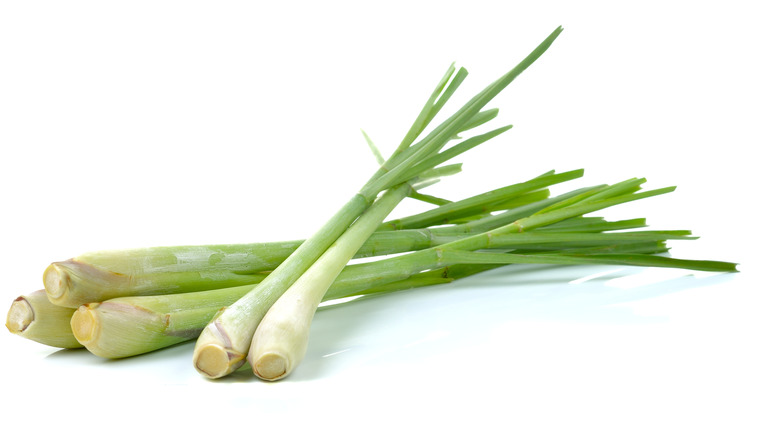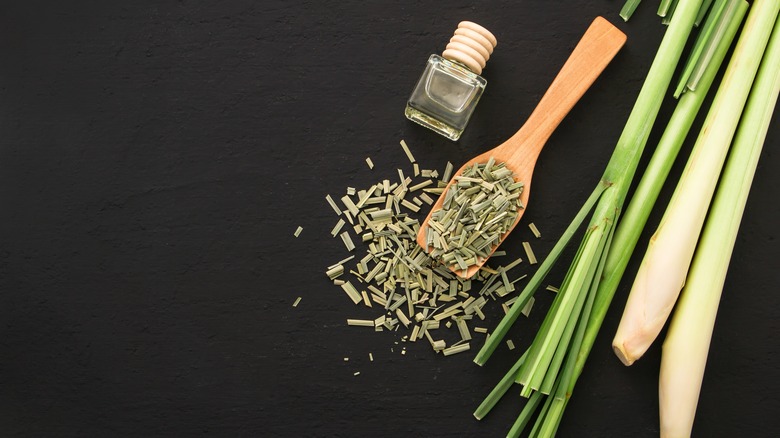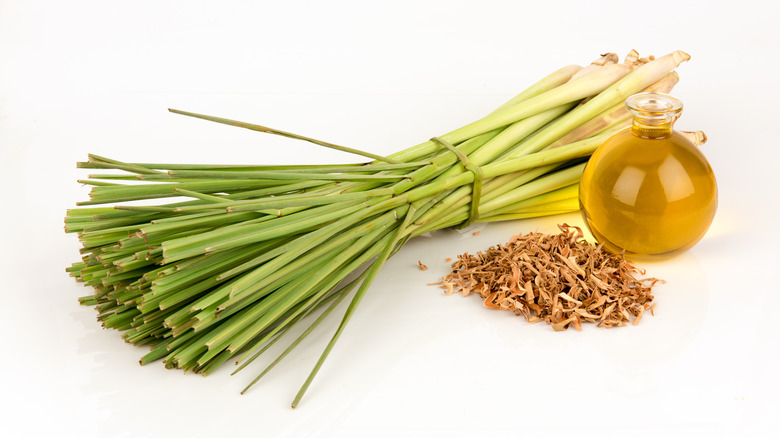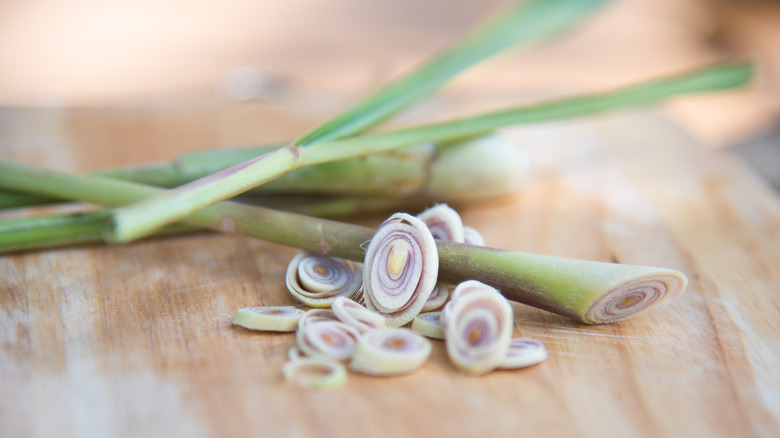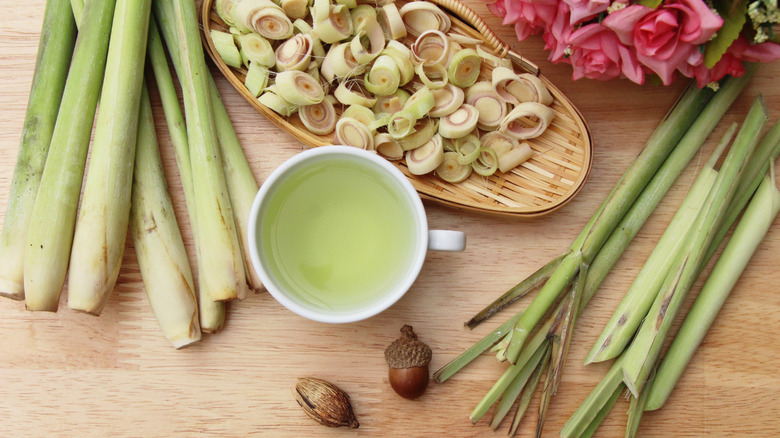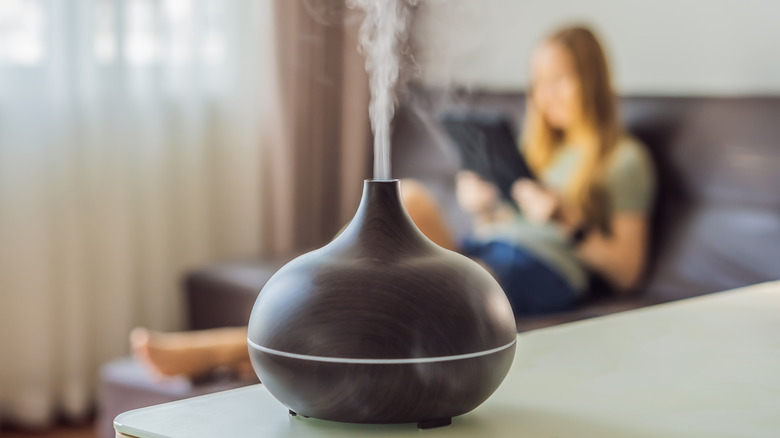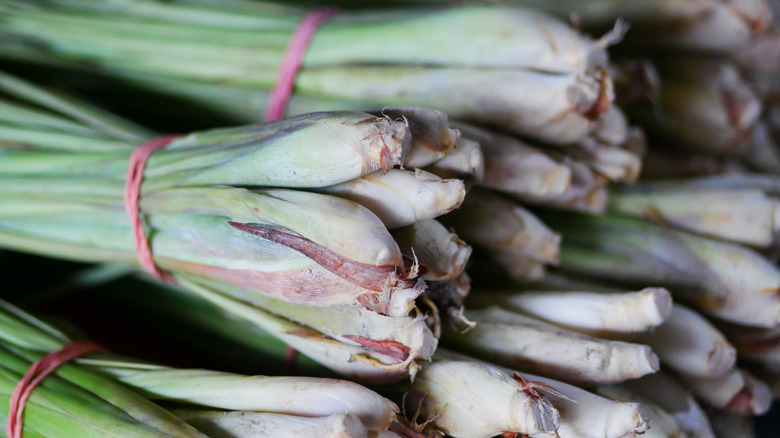What Is Lemongrass And How Do You Cook With It
The Thais call it takhrai. The Filipinos call it tanglad. The Indonesians call it serai, while the Cambodians use it to make an all-purpose culinary paste known as kroeung.
Lemongrass is a woody plant that bears a passing physical resemblance to scallions, has a flavor profile that aligns closely with lemons, and has a delightful fresh scent all its own. This versatile herb is widely used across Indian, Sri Lankan, as well as different Southeast Asian cuisines, and can be found in a wide range of dishes, including curries, sauces, and roasts, and as an infusion in teas and soups.
Despite its name, lemongrass doesn't have any connection to any citrus fruits. Instead, it belongs to a family of grasses known as Poaceae. Lemongrass is said to be native to Southeast Asia where it has grown for thousands of years — but the versatile grass didn't venture far from its home until the 17th century, when its oils become known in Europe as a perfume.
What does lemongrass taste like?
Lemongrass shares a quality with other herbs like parsley and basil, whose flavors change when they are dried. Fresh lemongrass punches well above its weight in the aroma and flavor department. It lives up to its name as it is not just citrusy and fresh but it also has a hint of ginger, and with undertones that have been described as both fruity and grassy. Yet, despite its complex flavor profile, lemongrass is a culinary team player, and as a result, it works well as part of an herb medley for curry pastes. It also imparts a lemony ginger flavor to soups as well as stir fries.
And while some dried herbs can pack a more intense flavor than fresh ones, that isn't exactly the case with lemongrass, whose flavor profile changes after it has been dehydrated. Dried lemongrass is described as having a more woodsy flavor and scent; because of this, its culinary applications are more limited.
Different forms of lemongrass
Lemongrass is easily grown and can be seen in both tropical and subtropical regions — it is so resilient the plant can be found worldwide, and has even been labelled an invasive species in parts of Central America and Mexico. As such, it is easy to pick up or find fresh lemongrass, which is preferred in the kitchen as an ingredient anyway. If fresh lemongrass is not available, frozen lemongrass, which may have already been prepped and ready-for-use is also an option. (Some grocery retailers also sell refrigerated tubes of lemongrass paste.) If none of those options are available, you can use lemongrass powder, which can be used not just to cook with, but also to brew tea with.
While lemongrass is also available as an essential oil from health food stores, there are warnings that these oils should neither be consumed nor ingested. Instead, lemongrass oil is used in aromatherapy preparations, in diffusers or diluted in massage oil.
How to cook with lemongrass
Fresh lemongrass is prepped for cooking by removing its hard outer layers to expose its softer pale interior. It is then topped and tailed: about half an inch is cut from the bottom, and three inches taken from the top, where white becomes green.
Once the lemongrass' bottom is exposed, it is then sliced, chopped finely, grated, pounded, or processed, to ensure that its oils are released and that it can actually be consumed. Like pandan, lemongrass is too tough and fibrous to eat as is. But when sliced into stalks, lemongrass can be used to power up soups or stuffed into roasts; when sliced thin they can be used in salads, and when they are grated, they can be mixed with other herbs and spices to make curry pastes, marinades, as well as sauces.
But the green tops shouldn't be discarded! They can also be used to flavor soups and curries. Because they cannot be eaten, however, the tough sections of lemongrass need to be removed before the dish is served.
Unlike fresh lemongrass, dried lemongrass can only be used in liquid preparations like soups and sauces, when it has time to simmer and rehydrate so it can flavor whatever dish it has been added to. And like the green tops of fresh lemongrass, dried lemongrass also needs to be removed from a dish before serving. Dried and powdered lemongrass can also be used to make a refreshing herbal tea.
Where to buy lemongrass
Because lemongrass is easy to grow, fresh or frozen versions of the herb can be easily found at the local grocery store or at your favorite Asian store. They are sold in bunches of three or four stalks that have been tied together — make sure all the stalks are firm and not rubbery. They need to feel heavy and full, and there should be no bruising. Its top half of its body should be green, while its bottom is white. If fresh or frozen lemongrass is not easily found, dried or powdered lemongrass may be purchased in its place, and these are available online.
If you're feeling particularly adventurous you may even want to try and grow your own lemongrass from your leftovers: leaving the bulb in water for up to a month. If it is alive, it will sprout roots and will be ready to put in soil when the roots are about an inch long. You can also try buying lemongrass seedlings or seeds from a local garden supply store.
Nutritional information on lemongrass
While lemongrass is said to be a rich source of minerals and antioxidants, most of those benefits aren't accessed when the herb is used to flavor dishes — but they are when it is consumed as a tea. Traditional medicine practitioners credit lemongrass as a source of relief for various gastrointestinal problems from stomach aches to vomiting, and it is also said to be a good analgesic that can help fight fevers and colds. Lemongrass is even used as an external treatment as an antiseptic, insect repellent, and to help with headaches and abdominal pains. When used with a carrier oil during massages, lemongrass is seen to promote relaxation.
Lemongrass has also been credited with helping to address other chronic, medical issues including high blood pressure and high cholesterol, but medical practitioners and researchers are quick to add that there isn't enough evidence to support lemongrass' ability to cure any of these ailments.
How to store lemongrass
If you've picked up or harvested fresh lemongrass, know that its stalks can be kept in the refrigerator, and wrapped in plastic for a few weeks. If you don't think you can use them quickly enough, there is always the option of cutting up lemongrass stalks and then freezing them in sealed plastic bags, so that they can be defrosted and then used as needed. Another option is to turn lemongrass into a paste by grinding that down, and then freezing that in one tablespoon-sized servings. When kept this way, lemongrass paste may be stored for up to three months. If it is wrapped carefully or stored in a sealed bag, fresh or frozen lemongrass shouldn't lose any of its flavor.
Dried or powdered lemongrass don't have to be stored in the fridge, but they do have to be kept away from both the light and heat. Dried lemongrass cannot be exposed to humidity, and must be kept in airtight containers.
